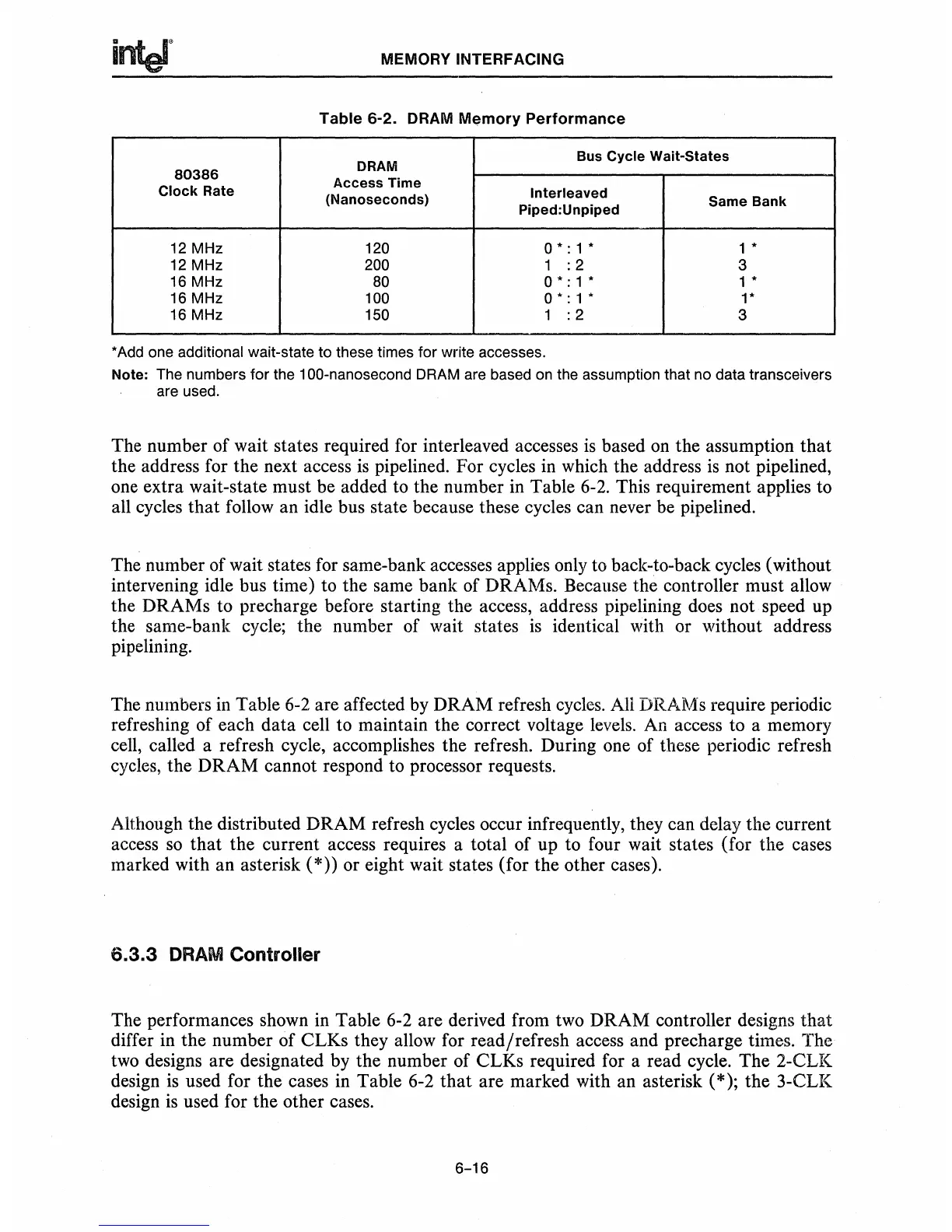MEMORY INTERFACING
Table
6-2. DRAM
Memory
Performance
DRAM
Bus
Cycle Wait-States
80386
Access Time
Clock Rate
(Nanoseconds)
Interleaved
Same
Bank
Piped:Unpiped
12 MHz 120
0'
: 1 '
1 '
12 MHz 200
1
:2
3
16 MHz
80
0'
: 1 '
1 '
16 MHz 100
o • : 1 '
l'
16 MHz 150
1
:2
3
'Add one additional wait-state to these times for write accesses.
Note: The numbers
for
the 100-nanosecond DRAM are based on the assumption that no data transceivers
are used.
The number of wait states required for interleaved accesses
is
based
on
the assumption
that
the address for the next access
is
pipelined. For cycles in which the address
is
not pipelined,
one extra wait-state must be added to the number in Table 6-2. This requirement applies to
all cycles
that
follow an idle bus state because these cycles can never be pipelined.
The number of wait states for same-bank accesses applies only to back-to-back cycles (without
intervening idle bus time) to the same bank of DRAMs. Because the controller must allow
the DRAMs to precharge before starting the access, address pipelining does not speed up
the same-bank cycle; the number of wait states
is
identical with or without address
pipelining.
The numbers
in
Table 6-2 are affected by DRAM refresh cycles. All DRAMs require periodic
refreshing of each data cell to maintain the correct voltage
levels.
An access to a memory
cell, called a refresh cycle, accomplishes the refresh. During one of these periodic refresh
cycles, the
DRAM
cannot respond to processor requests.
Although the distributed DRAM refresh cycles occur infrequently, they can delay the current
access
so
that
the current access requires a total of up to four wait states (for the cases
marked with an asterisk (*» or eight wait states (for the other cases).
6.3.3
DRAM
Controller
The performances shown in Table 6-2 are derived from two DRAM controller designs
that
differ in the number of CLKs they allow for read/refresh access and precharge times. The
two designs are designated by the number of CLKs required for a read cycle. The 2-CLK
design
is
used for the cases in Table 6-2
that
are marked with an asterisk (*); the 3-CLK
design
is
used for the other cases.
6-16

